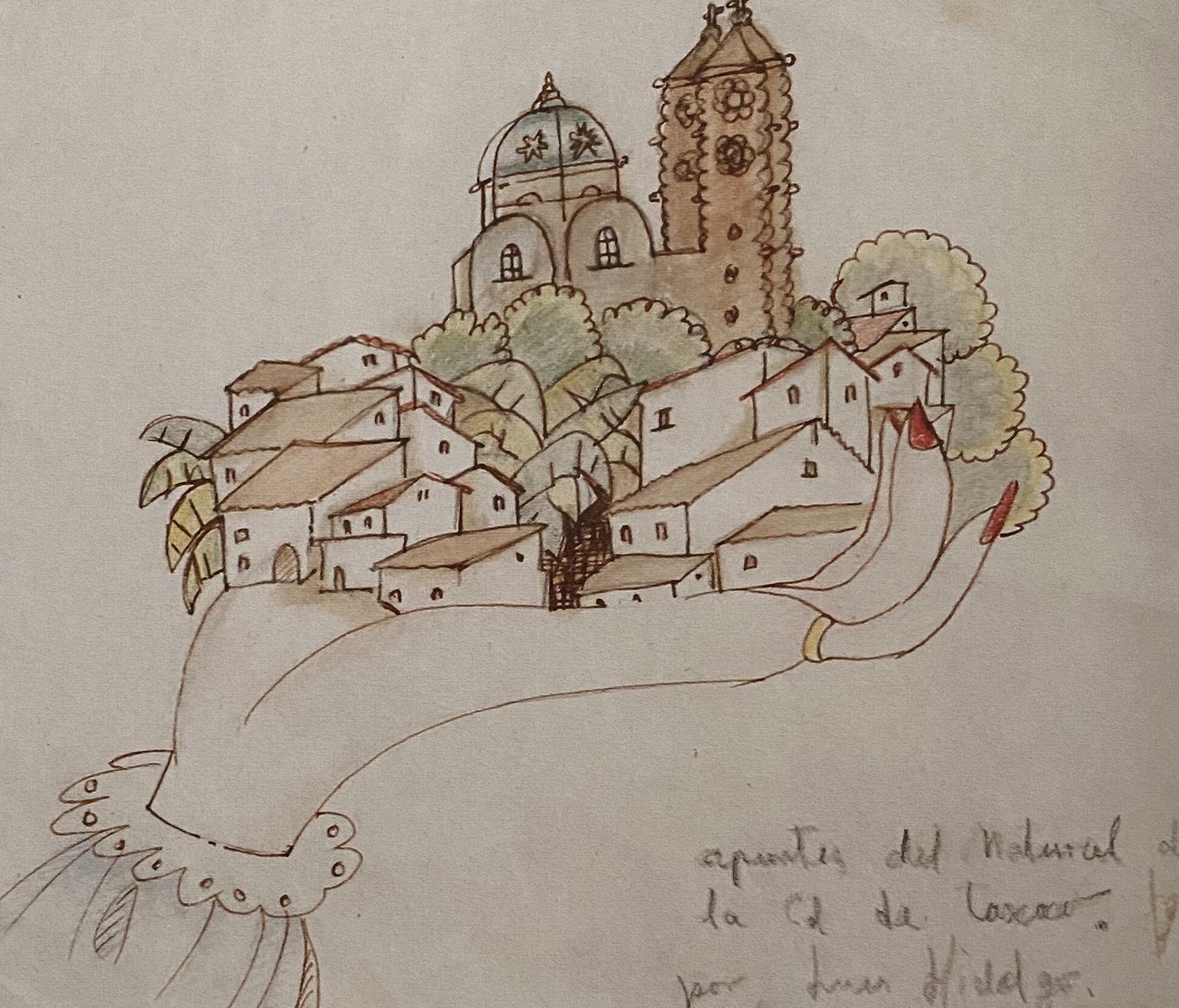Taxco
Taxco de Alarcon, also known as Taxco, is located in the north of the Mexican state of Guerrero, in central Mexico.
Its metalwork history goes way back to the Olmec and Toltec Mesoamerican civilizations and its use of metals and stones in this area, later it became one of the key localities to collect tribute for the Aztec empire.
In 1532, Spaniards found silver mines and started exploiting and commercializing it, colonization brought with it a silversmithing focus on religious artifacts, erasing its indigenous roots. In the 1700’s, José de la Borda arrived to Taxco and started a more modern mining industry, becoming the richest miner of colonial times and expanding the city of Taxco.
American architect William Spratling moved to Mexico in 1929, and started his own workshop named “Taller las Delicias”, in company of two Mexican silversmiths, Artemio Navarrete and Alfonso Mondragon. This workshop helped drive Taxco as the silver capital of the world, exporting items internationally. In the 1940’s it became an important tourist destination for celebrities, jewelry aficionados and collectors. To this day, Taxco’s main economy is related to silver.
Taxco’s silver jewelry production boomed during WWII, and many luxury retailers in the Unites Stated, such as Tiffany and Co., Saks Fifth Ave. and Neiman Marcus started acquiring Taxco’s silver pieces.
Taxco silversmiths are known for their craftsmanship and their techniques such as married metals, inlay of precious gemstones, wood and shell, jewelry, hollowware, table ware and sculpture pieces, most of them inspired by Mesoamerican history and a modernist approach.
In the 50’s master silversmiths, such as, Antonio Pineda, Matilde Poulat, Sigi Pineda, Los Castillo, Margot de Taxco, amongst many others, started their own workshops. Most of these workshops were family owned and went on from generation to generation.
Although Mexico is still the major silver producer in the world, Taxco is no longer a mining town, one of the last mines ceased operations in 2007 due to depletion of reserves, labor problems and strikes. Due to unionizing intents, taxes and the arrival of intermediaries, Taxco’s silversmith mastery started to decline, leaving many workshops unable to accommodate demand, closing shops and leaving many silversmiths without a job, due to the lack of capital, many of them started to commercialize in cheaper products that required less time to produce, leaving a silversmith decline in the town.
Every year, the “Feria de la Plata” (silver fair) is held to celebrate the craftsmanship of Taxco’s silversmiths, where they show their work and silver mastery. Its streets are still lined with silver jewelry shops and workshops run by families, due to its picturesque colonial baroque home facades, charming narrow cobblestone streets and alleyways, striking mountain top landscapes that look down on the city, its prevalent history, traditions, culture and silversmith reputation, Taxco has been named a “Pueblo Mágico” (Magic Town).
FERIA DE LA PLATA EN TAXCO
TAXCO SILVER FAIR
References:
Personal visit to Taxco, Mexico
Dreaming in Silver / Soñar en Plata: Silver Artists of Modern Mexico by Penny C. Morrill
Mexican Silver by Penny Chittim Morrill and Carole A. Berk
https://www.zonaturistica.com/en/things-to-do-and-places-to-visit/1372/silver-workshops-taxco.html
http://catarina.udlap.mx/u_dl_a/tales/documentos/bce/schmid_a/capitulo4.pdf
http://guerrero.gob.mx/articulos/plateria-de-taxco/
http://www.ladap.org/short-history-silver-jewelry-production-taxco/
https://arteenguerrero.wordpress.com/2014/01/29/feria-nacional-de-la-plata2013/




























